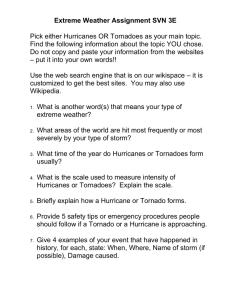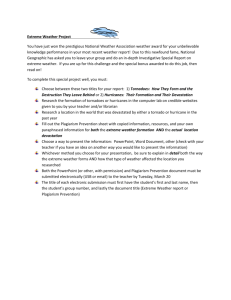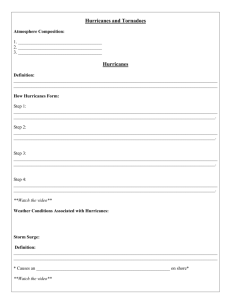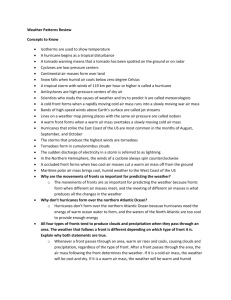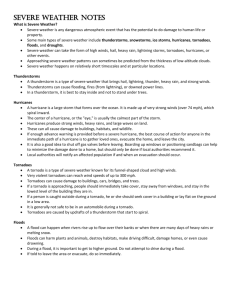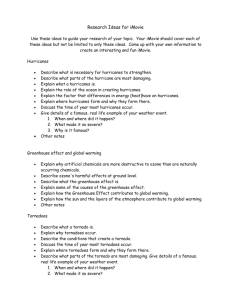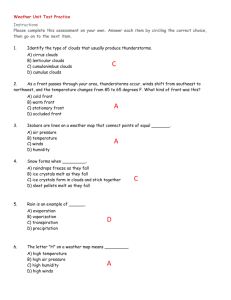The Power of Weather 1 What`s the weather like today? If you look
advertisement
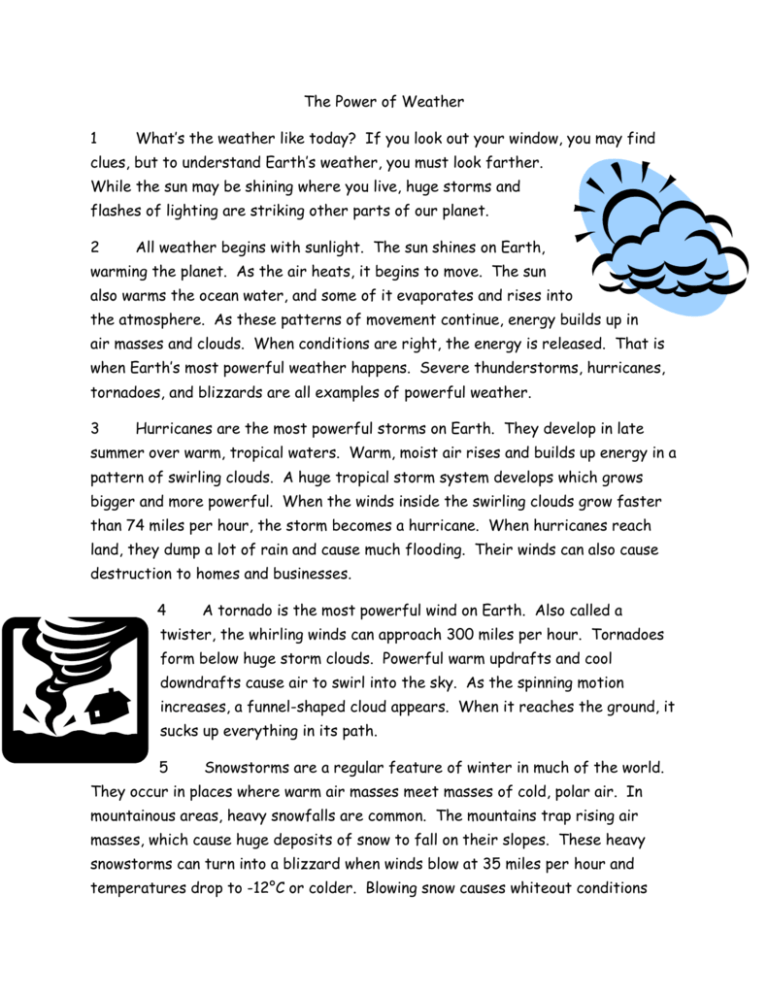
The Power of Weather 1 What’s the weather like today? If you look out your window, you may find clues, but to understand Earth’s weather, you must look farther. While the sun may be shining where you live, huge storms and flashes of lighting are striking other parts of our planet. 2 All weather begins with sunlight. The sun shines on Earth, warming the planet. As the air heats, it begins to move. The sun also warms the ocean water, and some of it evaporates and rises into the atmosphere. As these patterns of movement continue, energy builds up in air masses and clouds. When conditions are right, the energy is released. That is when Earth’s most powerful weather happens. Severe thunderstorms, hurricanes, tornadoes, and blizzards are all examples of powerful weather. 3 Hurricanes are the most powerful storms on Earth. They develop in late summer over warm, tropical waters. Warm, moist air rises and builds up energy in a pattern of swirling clouds. A huge tropical storm system develops which grows bigger and more powerful. When the winds inside the swirling clouds grow faster than 74 miles per hour, the storm becomes a hurricane. When hurricanes reach land, they dump a lot of rain and cause much flooding. Their winds can also cause destruction to homes and businesses. 4 A tornado is the most powerful wind on Earth. Also called a twister, the whirling winds can approach 300 miles per hour. Tornadoes form below huge storm clouds. Powerful warm updrafts and cool downdrafts cause air to swirl into the sky. As the spinning motion increases, a funnel-shaped cloud appears. When it reaches the ground, it sucks up everything in its path. 5 Snowstorms are a regular feature of winter in much of the world. They occur in places where warm air masses meet masses of cold, polar air. In mountainous areas, heavy snowfalls are common. The mountains trap rising air masses, which cause huge deposits of snow to fall on their slopes. These heavy snowstorms can turn into a blizzard when winds blow at 35 miles per hour and temperatures drop to -12°C or colder. Blowing snow causes whiteout conditions where the ability to see is greatly reduced. Many times, roads are block by the snow and people get trapped inside their homes until the storm stops and the snow either melts or is pushed away. 6 Earth’s air masses are always being stirred up. Is the weather outside pleasant today? Enjoy it! You can be certain that no matter where you live, sooner or later, wild weather will be on its way to you. ______________________________________________________________ 1. How does weather begin? o Wind o Sun o Water o Lightning 2. What do hurricanes, tornadoes, and blizzards all have in common? o Lightning o Heavy Snow o Strong Winds o Flooding 3. Which of the following is NOT a difference between hurricanes and tornadoes? o Tornadoes do not cause flooding and hurricanes do. o Tornadoes have stronger winds than hurricanes. o Tornadoes have swirling winds and hurricanes do not. o Tornadoes can form anywhere and hurricanes form over the ocean.

